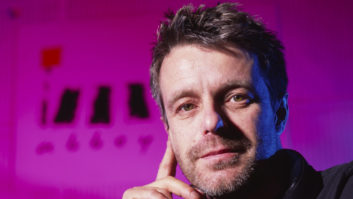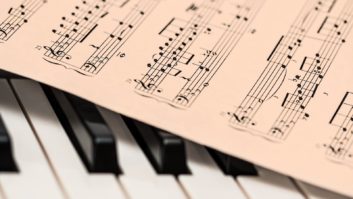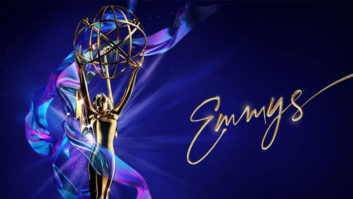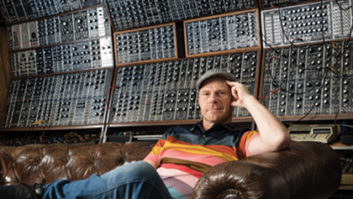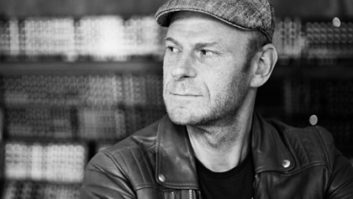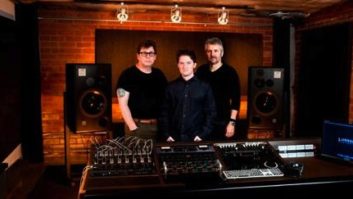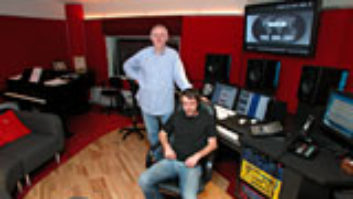Growing up just south of London, Harry Gregson Williams spent hours every school day performing works by the English choral masters as a member of a refined choir. He continued singing while at the Guild Hall School of Music and Drama. Now one of the most successful film composers in L.A., with scores for The Chronicles of Narnia, Kingdom of Heaven, Shrek I and II and others under his belt, it’s easy to spot these early influences in his writing, which combines elements of electronica, rock and big band with subtle reflections on Byrd, Tallis and other early masters such as Palestrina and Machaut.
“I studied lots of early music when I was a boy, and it does come back to influence my current work,” Williams says. “When I was spotting Kingdom of Heaven with Ridley Scott, I saw that he’d shot the first act of the film, which unravels in northern France, in a constant, wintry, cold blue light. Ridley told me that he wanted me to reflect that atmosphere in the score.
“I decided to use the early music group Fretwork on these sessions,” he continues. “They play viols, and though I could have used a standard string quintet to achieve much of the effect we were looking for, the viols added that much more ice. I was blown away by the subtle differences in sound. Fortunately, the group cut me some slack and helped me get the most out of them. As far as the writing, I wasn’t trying to emulate authentic 12th-century harmony, but I did use a different harmonic language than what is normal for me. When it came down to tracking the consort at Abbey Road, Peter Cobbin, the excellent engineer whom I’ve worked with in the past to record and mix, and I weren’t sure how the group would sound in Studio One, but the results were extremely rich.”
Williams’ first exposure to film music came through Hans Zimmer. “Hans and I met in 1994,” Williams recalls. “He was looking for someone to help record some chorale singing for Crimson Tide, and he knew that I had had training in this area. Several weeks after we completed our work, he called and asked if I’d like to ‘chance my arm’ [American translation: take a risk] and come over to check out Media Ventures, which wasn’t as large then as it later became. I didn’t need a second invitation!
“When I arrived, it became clear that these people were having a lot of fun, and so I took him up on his offer and worked as his apprentice for several years. Hans was extremely generous to me. What a great education it was, going with him to meetings on huge, important films, and not being the person responsible for the way things turned out! Eventually, I started writing the odd cue and conducting his orchestra. After doing this for three or four years, I told Hans that I thought it was time for me to start at the bottom and see what I could do for myself, and he agreed. After operating out of Media Ventures for several years, I moved into my place, Wavecrest Music.”
Williams generally begins by sketching themes at the piano and moves over to his workstation to develop thematic material. Although he runs Ableton Live 5 on a Power Mac G5, Williams — a longtime Mac user — switched over to the PC platform about a year ago. His DAW of choice, Steinberg Cubase SX 3.1, operates on a Dual Xeon 3.6GHz system with 4 gigabytes of RAM, 75-gig mirrored SATA system drives and a pair of RME HDSP 9652 sound cards.
“I never thought I’d use a PC, but Hans told me that he’d switched over from the Mac because it was a faster and more stable platform,” he explains. “I’m a huge Cubase fan and had been using this sequencer on a Mac under OS 9. When Cubase evolved into SX, I had to either move to OS X on the Mac or jump over to the PC, which I did.”
Wavecrest incorporates a pair of Pro Tools systems into the workflow. An HD Accel system, running on a G5 dual-2.5GHz Mac, is used to interface with video playback units, and a second identical rig functions as a mixer for Williams’ huge GigaStudio 3 system. All of Williams’ orchestral samples, including many custom samples that were recorded at Air Studios in London under the auspices of Zimmer, are laid out across six computers, each of which is fed into the Pro Tools rig. Although he now works with budgets that don’t force him to work with samples in place of real musicians, having the ability to detail a score in advance of a tracking session is a comfort to Williams and the directors with whom he works.
“The first time I had the good fortune to be let loose on a decent-size orchestra was when I worked with Bille August on Smilla’s Sense of Snow,” he says. “Both this film and one I scored shortly thereafter, The Borrowers, had budgets enough for a decent-sized orchestra. At that stage, I was still somewhat inexperienced and so I sequenced my sample orchestra, playing every note as a kind of fail-safe, and in both those scores, I mixed in some of my samples alongside the players. Since that time, I’ve used this technique less and less; Kingdom and Narnia didn’t incorporate any of my orchestral samples, although I did sequence everything prior to going into the studio, both for myself and for the sense of security that these highly realized demos provide to the director.
“I don’t know how John Williams and Steven Spielberg work; maybe, because their track record is so good, all that Williams has to do is tinkle out a theme on the piano for Spielberg to say, ‘Right, I’ll see you on the scoring stage.’ I very much sequence up everything for the director. The samples are of a great quality, and he can feel what the final will sound like. I’ve had a director point toward a melody I’ve written for a single flute and ask what it would sound like if played by a battery of French horns. I find that extremely helpful.”
What qualities should a director possess if he/she is to get the very best from a composer? “The best results come when a director keeps an open mind,” Williams responds. “Andrew Adamson, who I worked with on Shrek, Shrek II and Narnia, is a good example. Andrew’s a musical guy, but he gives me a certain rein while maintaining his vision for a score. He’s also encouraging, which is very helpful. This business isn’t all a bed of roses: One man’s foie gras is another’s turkey intestine. There have been times when I’ve written a cue that I thought was the most romantic, moving piece, and played it for a director who doesn’t get it at all. You have to be quite thick-skinned.”
Although he routinely uses large rooms to record orchestras and choirs, Williams doesn’t hesitate to track a variety of smaller ensembles and individual instrumentalists in his own room. Costas Kotselas, who oversees the technical operations at Wavecrest Music, says that the studio is being streamlined. All of the Yamaha 02Rs that had dotted the facility are being replaced with the pair of Pro Tools rigs. No hardware mixers will reside in Wavecrest, which will retain many hardware devices, including 14 E-mu E4X samplers and two dozen Roland S-760s. The studio relies heavily on its Quested monitoring system, which comprises five 2108 speakers and a VS115 sub. Outboard processors of choice include an Eventide DSP4000 and Lexicon PCM 80s and PCM 90s.
Despite his swift rise in the ranks, Williams remains committed to choosing projects on their artistic merits whenever possible. “Some of my most rewarding experiences have been on low-budget films,” he says. “The Magic of Marciano, which I believe went straight to video, was wonderful. I also had a great time working on Passionata for the director Dan Island.
“Variety is very important to me,” he concludes. “Right now I’m working with two mad Welsh DJs who call themselves Hybrid on their album. Simply doing four or five romantic comedies a year would get tedious, and I’m sure I’d start to phone the work in. But going from Shrek II to Man on Fire to Kingdom of Heaven to Narnia — each one represented a unique opportunity and scared the crap out me. That’s how I stay interested!”
